Understanding the company
Intel and its three founders is possible only when you understand Silicon Valley and its origins. And to do this, you need to penetrate the history of the company
Shokley Transistor , the
Treacherous Eight, and
Fairchild Semiconductor . Without their understanding, Intel will remain the same to you as for most people - a secret.
The invention of computers did not mean that the revolution began immediately. The first computers based on large, expensive, fast-breaking electronic tubes were expensive monsters that only corporations, research universities, and the military could keep. The emergence of transistors, and then new technologies that allow to erase millions of transistors on a tiny microchip, meant that the computing power of many thousands of ENIAC devices can be concentrated in the head of the rocket, in a computer that can be held on your lap, and in portable devices.
In 1947, Bell Laboratory engineers John Bardeen and Walter Brattein invented the transistor, which was introduced to the general public in 1948. A few months later, William Shockley, one of the Bell employees, developed a bipolar transistor model. The transistor, which, in essence, is a solid-state electronic switch, has replaced a bulky vacuum tube. The transition from vacuum tubes to transistors marked the beginning of a miniaturization trend that continues today. The transistor has become one of the most important discoveries of the XX century.
In 1956, Nobel laureate in physics, William Shockley, created the company Shockley Semiconductor Laboratory to work on four-layer diodes. Shockley failed to attract his former employees from Bell Labs; instead, he hired a group, in his opinion, of the best young electronics specialists who recently graduated from American universities. In September 1957, due to a conflict with Shockley, who decided to stop research on silicon semiconductors, eight key employees at Shokley Transistor decided to leave their jobs and start doing their work. Eight people are now forever known as the Treacherous Eight. This epithet gave them Shockley when they left work. The eight included Robert Noyce, Gordon Moore, Jay Last, Gene Hourney, Victor Greenich, Eugene Kleiner, Sheldon Roberts and Julius Blank.

After leaving, they decided to create their own company, but the investment was nowhere to take. As a result of calling 30 companies, they came across Fairchild, the owner of Fairchild Camera and Instrument. He gladly invested one and a half million dollars in a new company, which was almost twice as much as eight of its founders had originally thought necessary. A so-called premium deal was concluded: if the company proves successful, it will be able to redeem it in full for three million. Fairchild Camera and Instrument took advantage of this right already in 1958. Called a subsidiary of Fairchild Semiconductor.
In January 1959, one of the eight founders of Fairchild, Robert Noyce, invented a silicon integrated circuit. At the same time, Jack Kilby in Texas Instruments invented the germanium integrated circuit six months earlier - in the summer of 1958, however, the Neuss model turned out to be more suitable for mass production, and it was used in modern chips. In 1959, Kilby and Neuss independently applied for patents for an integrated circuit, and both successfully obtained them, and Noyce received his patent first.
In the 1960s, Fairchild became one of the leading manufacturers of operational amplifiers and other analog integrated circuits. However, at the same time, the new management of Fairchild Camera and Instrument began to limit the freedom of action of Fairchild Semiconductor, which led to conflicts. One by one, members of the G8 and other experienced employees began to quit and establish their own companies in Silicon Valley.

Intel was founded on July 18, 1968 by Robert Noys, Gordon Moore and Andrew Grove.
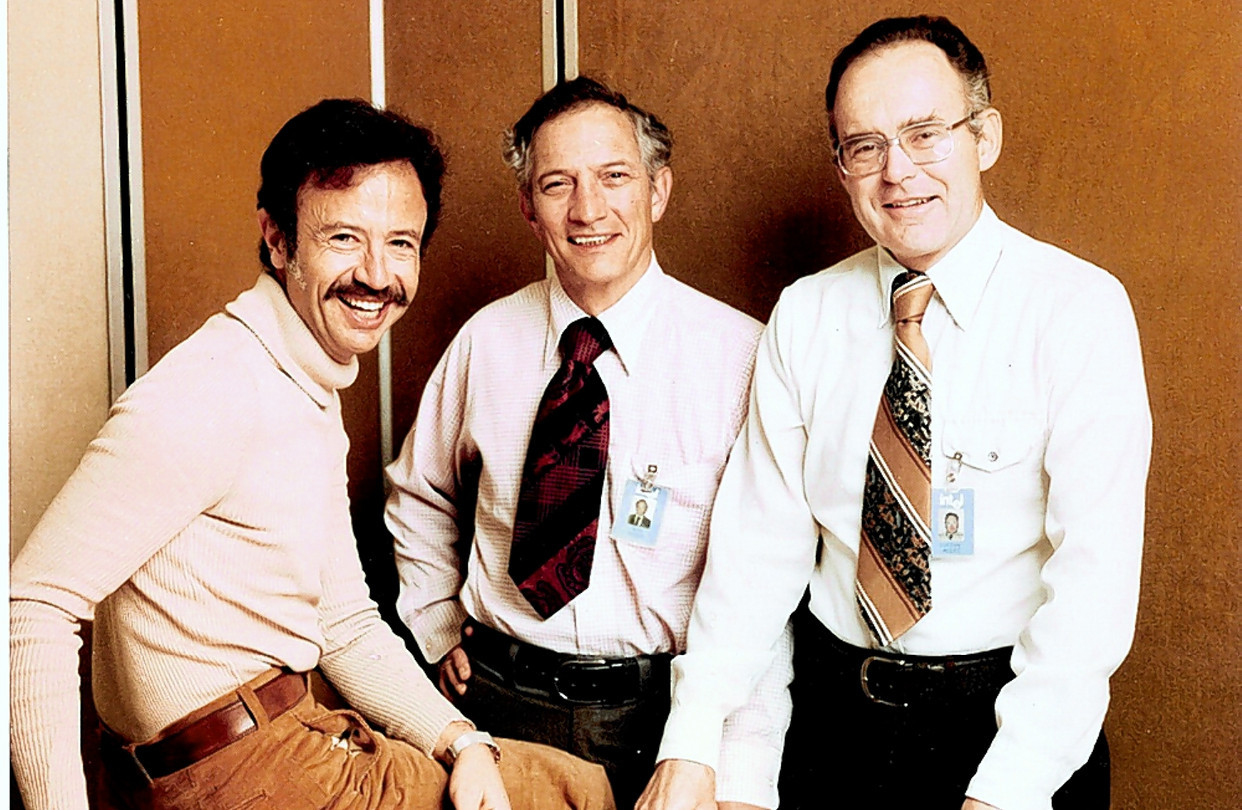
The first name chosen by Noyce and Moore was NM Electronics, N and M are the first letters of their last names. But it was not very impressive. After a large number of not very successful proposals, for example, Electronic Solid State Computer Technology Corporation, they came to a final decision: the company will be called Integrated Electronics Corporation. In itself, it was also not too impressive, but it had one virtue. The company could be abbreviated as Intel. It sounded good. The name was energetic and eloquent.
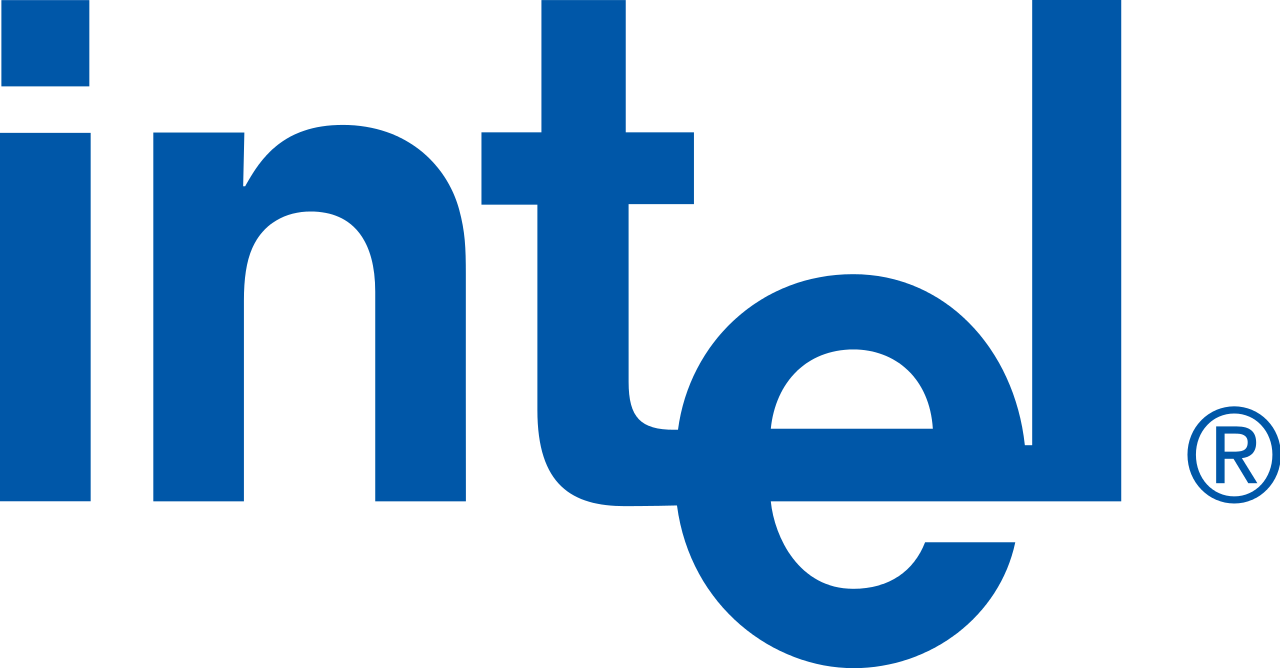
Scientists set themselves a definite goal: to create a practical and affordable semiconductor memory. Nothing like this has ever been created, given the fact that the memory device on silicon chips cost at least a hundred times more than the usual for that time memory on magnetic cores. The cost of semiconductor memory reached one dollar per bit, while the magnetic core memory cost only about a cent per bit. Robert Noys said: “We only needed to do one thing - reduce the cost by a hundred times and thereby conquer the market. This is what we mostly did. ”
In 1970, Intel released a 1 Kbit memory chip, far exceeding the capacity of the existing chips (1 Kbit is 1024 bits, one byte consists of 8 bits, that is, the chip could store only 128 bytes of information, which by modern standards is negligible. ) The created microcircuit, known as Dynamic Random Access Memory (DRAM) 1103, became by the end of next year the best-selling semiconductor device in the world. By this time, Intel had grown from a handful of enthusiasts to a company with more than a hundred employees.
At this time, the Japanese company Busicom asked Intel to develop a chipset for a family of high-performance programmable calculators. The initial design of the calculator provided for at least 12 different types of microcircuits. Intel engineer Ted Hoff rejected this concept and instead developed a single-chip logical device that receives application commands from semiconductor memory. This central processor worked under control of the program which allowed to adapt functions of a microcircuit for performance of incoming tasks. The microcircuit was universal in nature, that is, its use was not limited to a calculator. Logical modules had only one purpose and a strictly defined set of commands that were used to control its functions.
One problem was connected with this chip: all rights to it belonged exclusively to Busicom. Ted Hoff and other developers understood that this design has almost unlimited application. They insisted that Intel redeem the rights to the created chip. Intel offered Busicom to return 60 thousand dollars paid by it for a license in exchange for the right to dispose of the developed chip. As a result, Busicom, being in a difficult financial situation, agreed.
On November 15, 1971, the first 4-bit microcomputer set 4004 appeared (the term microprocessor appeared much later). The microcircuit contained in itself 2300 transistors, cost $ 200 and was comparable in its parameters to the first ENIAC computer, created in 1946, using 18 thousand vacuum tubes and occupying 85 cubic meters.
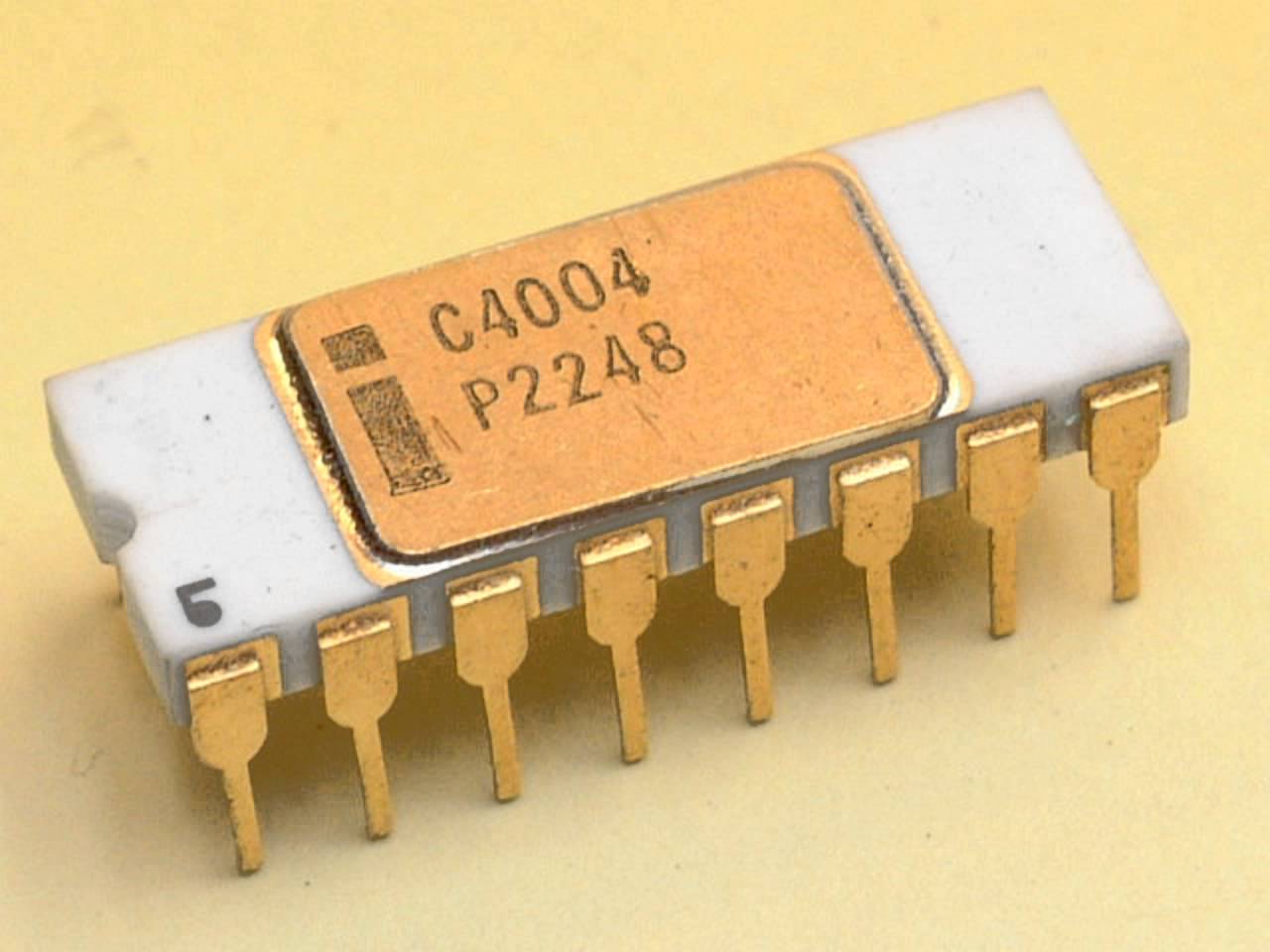
The microprocessor performed 60 thousand operations per second, ran at 108 kHz and was produced using 10 micron technology (10,000 nanometers). Data was transmitted in blocks of 4 bits per clock, and the maximum addressable amount of memory was 640 bytes. The 4004th was used to control traffic lights, in the analysis of blood and even in the Pioneer 10 research rocket launched by NASA.
In April 1972, Intel released the 8008 processor, which ran at 200 kHz.

It contained 3,500 transistors and was produced using the same 10-micron technology. The data bus was 8-bit, which allowed to address 16 KB of memory. This processor was intended for use in terminals and programmable calculators.
The next processor model, the 8080, was announced in April 1974.
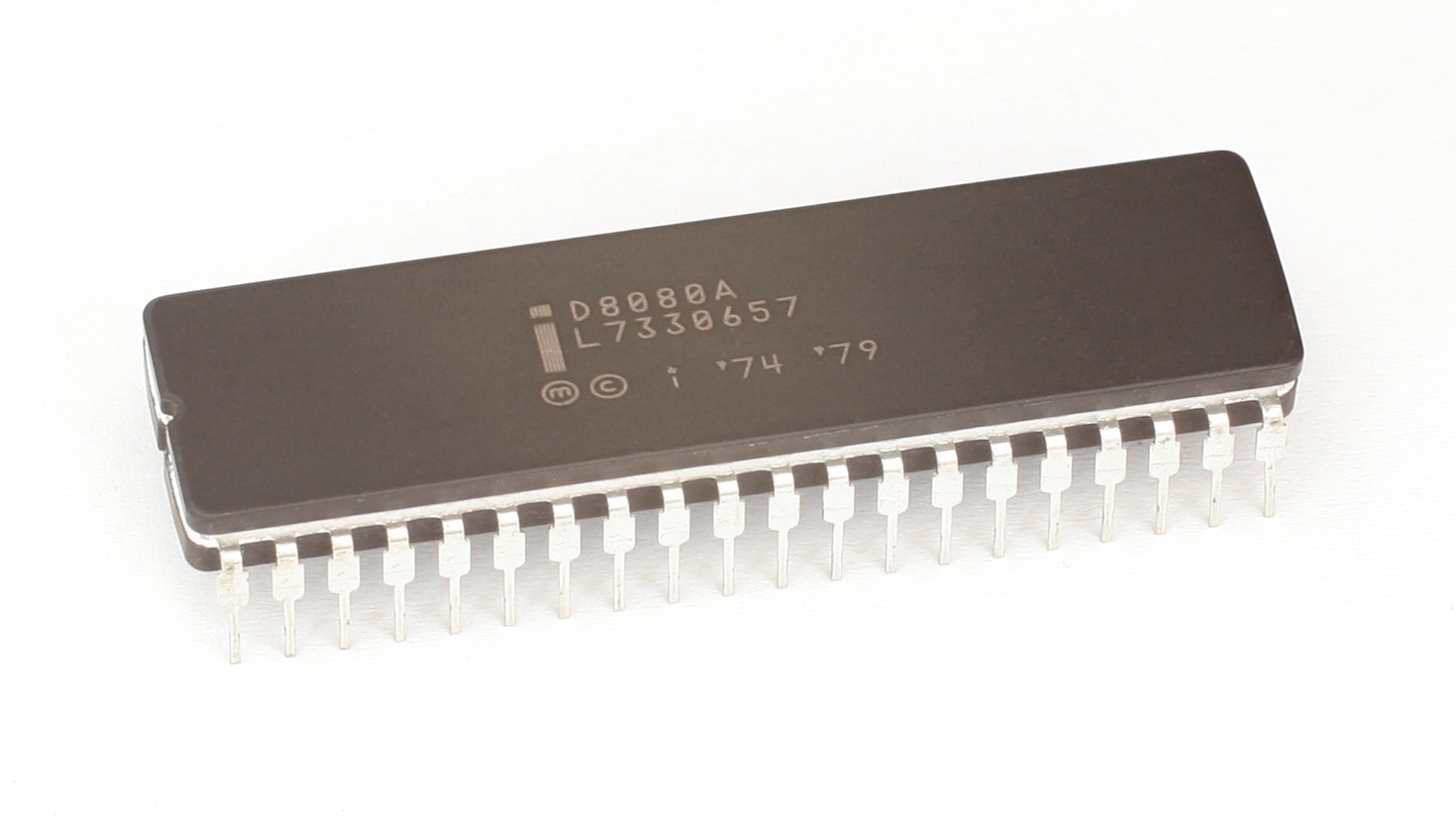
This processor already contained 6000 transistors and could address 64 KB of memory. It was assembled the first personal computer (not PC) Altair 8800. This computer used the operating system CP / M, and Microsoft developed an interpreter for the programming language BASIC for it. It was the first mass model of a computer for which thousands of programs were written.
Over time, the 8080 became so famous that it began to be copied.
At the end of 1975, several former Intel engineers who were developing the 8080 processor created Zilog. In July 1976, this company released the Z-80 processor, which was a significantly improved version of the 8080.

This processor was incompatible with the 8080 for contact pins, but combined many different functions, such as a memory interface and a RAM update scheme, which made it possible to develop cheaper and simpler computers. The Z-80 also included an enhanced 8080 processor command set, allowing its software to be used. This processor includes new commands and internal registers, so software developed for the Z-80 could be used with almost all versions of 8080.
Initially, the Z-80 processor operated at a frequency of 2.5 MHz (later versions were already operating at a frequency of 10 MHz), contained 8500 transistors and could address 64 KB of memory.
Radio Schack chose the Z-80 processor for its TRS-80 Model 1 personal computer. Soon, the Z-80 became the standard processor for systems running the CP / M operating system and the most common software of the time.
Intel did not stop there, and in March 1976, it released the 8085 processor, which contained 6,500 transistors, ran at 5 MHz and was manufactured using 3-micron technology (3,000 nanometers).
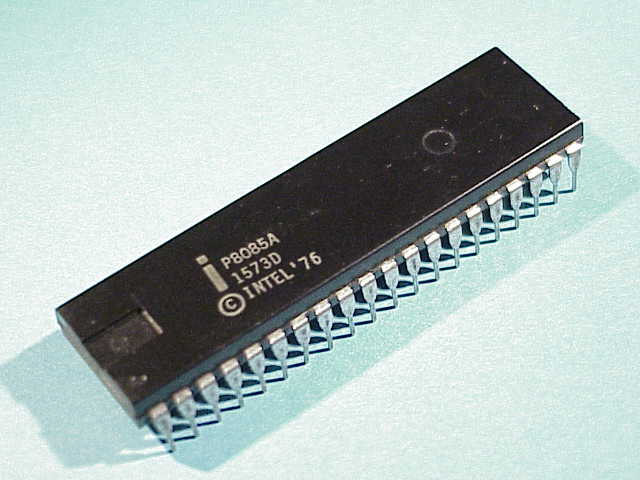
Despite the fact that it was released a few months earlier than the Z-80, it never managed to achieve the popularity of the latter. It was used primarily as a control chip for various computerized devices.
In the same year, MOS Technologies released the 6502 processor, which was completely unlike the Intel processors.
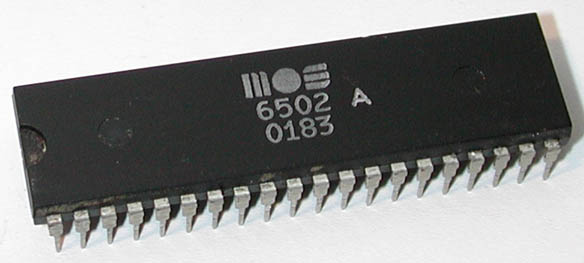
It was developed by a group of engineers from Motorola. The same group worked on the creation of a 6800 processor, which in the future transformed into a 68000 processor family. The price of the first version of the 8080 processor reached three hundred dollars, while the 8-bit 6502 cost only about twenty-five dollars. This price was quite acceptable for Steve Wozniak, and he built the 6502 processor into the new Apple I and Apple II models. The 6502 processor was also used in systems developed by Commodore and other manufacturers.
This processor and its successors successfully worked in gaming computer systems, which included the Nintendo Entertainment System console. Motorola continued to work on the creation of a series of 68000 processors, which were later used in Apple Macintosh computers. The second generation of Mac computers used the PowerPC processor, which is the successor to the 68000. Today, Mac computers have gone over to the PC architecture and use the same processors, system logic chips and other components with them.
In June 1978, Intel introduced the 8086 processor, which contained a set of commands, code-named x86.

The same instruction set is still supported in all modern microprocessors: AMD Ryzen Threadripper 1950X and Intel Core i9-7920X. The processor 8086 was completely 16-bit - internal registers and data bus. It contained 29,000 transistors and worked at a frequency of 5 MHz. Thanks to the 20-bit address bus, it could address 1 MB of memory. When creating the 8086th, backward compatibility with the 8080th was not foreseen. But at the same time, a significant similarity of their teams and language allowed the use of earlier versions of the software. This property subsequently played an important role for the quick transfer of CP / M (8080) system programs to PC rails.
Despite the high efficiency of the 8086 processor, its price was still too high by the standards of the time and, more importantly, its work required an expensive 16-bit data bus support chip. To reduce the cost of the processor, in 1979, Intel released the 8088 processor - a simplified version of the 8086.
The 8088th used the same internal core and 16-bit registers as the 8086, could address 1 MB of memory, but, unlike the previous version, used an external 8-bit data bus. This made it possible to provide backward compatibility with the previously developed 8-bit 8085 processor and thereby significantly reduce the cost of motherboards and computers being created. That is why IBM chose a cut-down 8088 processor instead of an 8086 for its first PC. This decision had far-reaching implications for the entire computer industry.
The 8088 processor was fully software-compatible with the 8086, which allowed the use of 16-bit software. The 8085 and 8080 processors used a very similar instruction set, so programs written for previous processors could easily be converted to the 8088 processor. This, in turn, allowed us to develop various programs for the IBM PC, which was the key to its future success. Not wanting to stop halfway, Intel was forced to provide backward compatibility support for the 8086/8088 with most processors released at the time.
Intel immediately began to develop a new microprocessor after the release of 8086/8088. The 8086 and 8088 processors required a large number of support chips, and the company decides to develop a microprocessor that already contains all the necessary modules on the chip. The new processor included many of the components previously released as separate chips, which would dramatically reduce the number of chips in the computer, and, consequently, reduce its cost. In addition, the system of internal teams was expanded.
In the second half of 1982, Intel released the 80186 embedded processor, which, in addition to the improved 8086 core, also contained additional modules replacing some support chips.
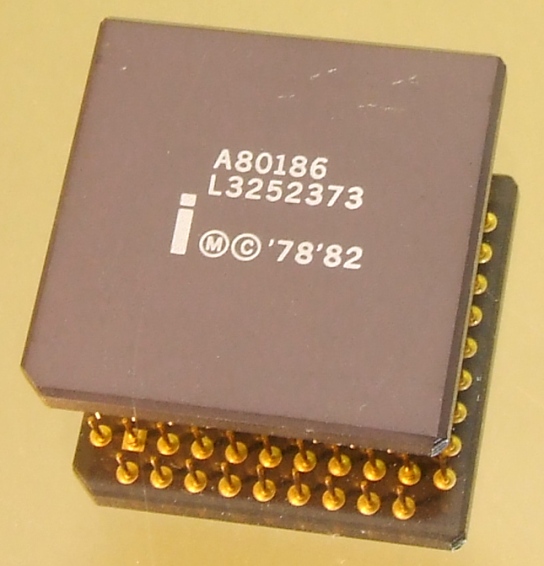
Also in 1982, 80188 was released, which is a version of the 80186 microprocessor with an 8-bit external data bus.
Released on February 1, 1982, the 16-bit x86-compatible microprocessor 80286 was an improved version of the 8086 processor and had 3-6 times more performance.

This qualitatively new microprocessor was then used in the landmark IBM PC-AT computer.
The 286th was developed in parallel with the 80186/80188 processors, but it lacked some of the modules available on the Intel 80186 processor. The Intel 80286 processor came in exactly the same package as the Intel 80186-LCC, as well as in PGA packages with sixty-eight conclusions.
In those years, the backward compatibility of processors was still maintained, which did not prevent the introduction of various innovations and additional features. One of the main changes was the transition from the 16-bit internal architecture of the processor 286 and earlier versions to the 32-bit internal architecture of the 386th and subsequent processors belonging to category IA-32. This architecture was introduced in 1985, but it took another 10 years for operating systems such as Windows 95 (partly 32-bit) and Windows NT (requiring only 32-bit drivers) to appear on the market. And only 10 years later, the Windows XP operating system appeared, which was 32-bit both at the driver level and at the level of all components. So, it took 16 years to adapt 32-bit computing. For the computer industry, this is quite a long time.
80386th appeared in 1985. It contained 275 thousand transistors and performed more than 5 million operations per second.
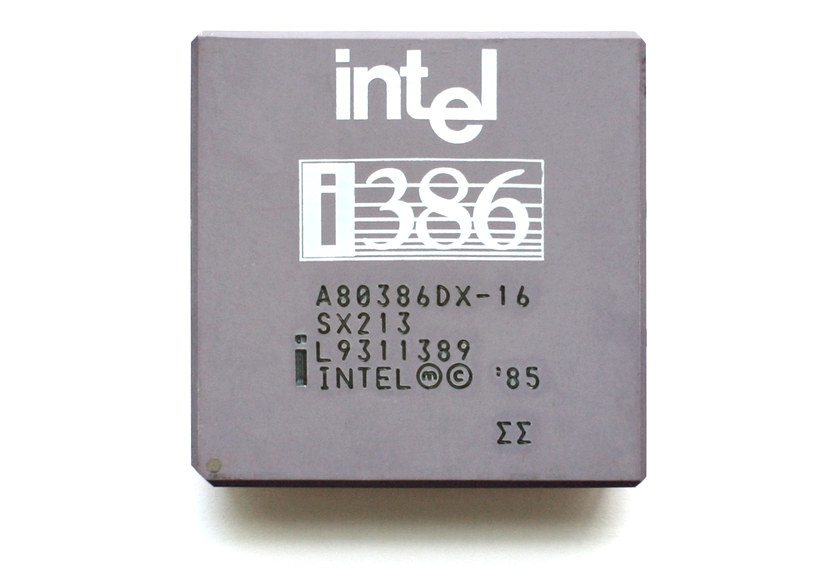
Compaq's DESKPRO 386 computer was the first PC based on a new microprocessor.
The next of the x86 processor family was the 486th, which appeared in 1989.

It already contained 1.2 million transistors and the first built-in coprocessor, and also worked 50 times faster than the 4004 processor; its performance was equivalent to that of powerful mainframes.
Meanwhile, the US Department of Defense did not enjoy the prospect of staying with a single chip supplier. As the last fewer and fewer (remember, what zoo was observed in the early nineties), the importance of AMD, as an alternative manufacturer, grew. Under the agreement of 1982, AMD had all the licenses for the production of the 8086, 80186 and 80286 processors, however, the newly developed 80386 processor from Intel refused to transfer to AMD categorically. And the agreement broke off. Then followed a long and loud lawsuit - the first in the history of companies. It ended only in 1991 with the victory of AMD. Intel paid the claimant one billion dollars for its position.
But still the relationship was spoiled, and the former confidentiality was not discussed. Moreover, AMD has taken the path of reverse engineering. The company continued to produce different hardware, but completely coincident in microcode Am386 processors, and then Am486. Intel has already gone to court. Again, the process was delayed for a long time, and success turned out to be on one side then the other. 30 1994 , Intel Intel, - , . 1995- . Intel Pentium AMD K5 x86, . , , Intel AMD .
, . Intel AMD, , , AMD , Intel.
1993 Intel Pentium, 486. 3,1 90 , 4004.
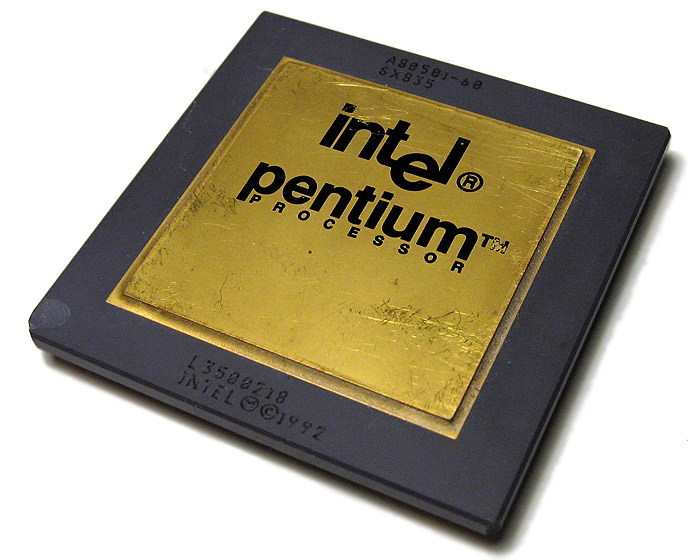
, , Sexium .
P6, Pentium Pro, 1995 .
 It contained 5.5 million transistors and was the first processor, the cache of the second level of which was placed directly on the chip, which made it possible to significantly increase its speed. The processor contained 16 KB L1 cache and 256 KB L2. A large amount of cache memory was partly compensated by the lack of MMX commands.Revising the P6 architecture, Intel introduced the Pentium II processor in May 1997.
It contained 5.5 million transistors and was the first processor, the cache of the second level of which was placed directly on the chip, which made it possible to significantly increase its speed. The processor contained 16 KB L1 cache and 256 KB L2. A large amount of cache memory was partly compensated by the lack of MMX commands.Revising the P6 architecture, Intel introduced the Pentium II processor in May 1997.
7,5 , , , , - L2 . . 1998 Pentium II Celeron, , Pentium II Xeon, . 1998 Intel - ( ) , .
Pentium , AMD NexGen, Nx686. AMD K6.

, Pentium, Socket 7 . AMD K6 .
, - , Pentium III, Coppermine, 1999 , , , Pentium II, SSE.
1998 AMD Athlon, Intel .
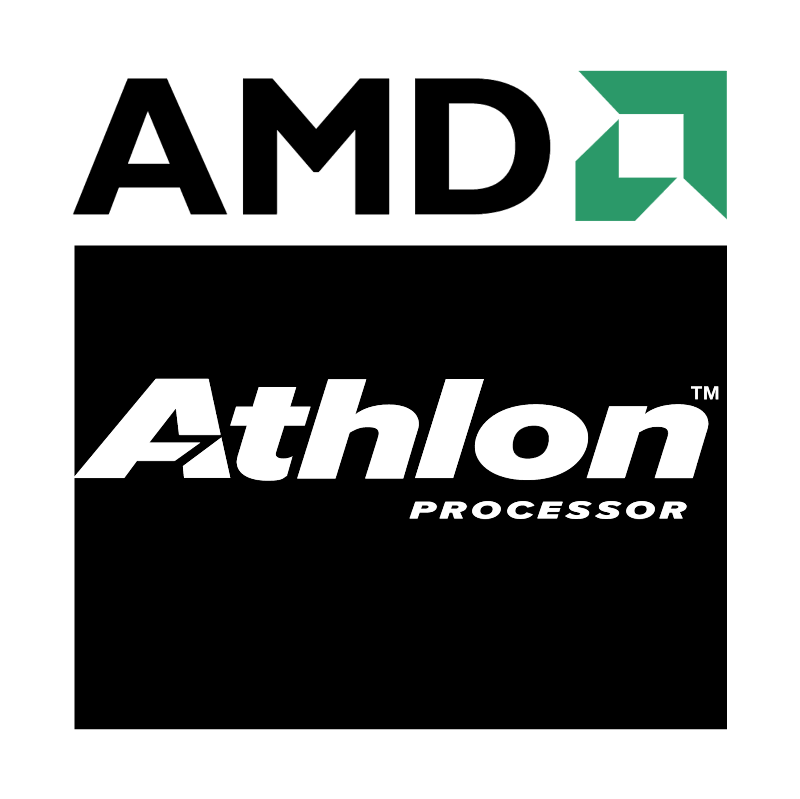 This processor was very successful, and Intel got it in the face of a worthy opponent in the field of high-performance systems. Today, the success of the Athlon processor is beyond doubt, however, there were concerns when it entered the market. The fact is that, unlike its predecessor K6, which was compatible on both software and hardware levels with an Intel processor, Athlon was only software-compatible — it required a specific chipset of system logic and a special socket.New AMD processors were released on 250-nm technology with 22 million transistors. They had a new unit of integer calculations (ALU). The EV6 system bus provided data transmission on both clock fronts, which made it possible to obtain an effective frequency of 200 megahertz at a physical frequency of 100 megahertz. The cache of the first level was 128 Kb (64 Kb of instructions and 64 Kb of data). The second level cache reached 512 Kb.
This processor was very successful, and Intel got it in the face of a worthy opponent in the field of high-performance systems. Today, the success of the Athlon processor is beyond doubt, however, there were concerns when it entered the market. The fact is that, unlike its predecessor K6, which was compatible on both software and hardware levels with an Intel processor, Athlon was only software-compatible — it required a specific chipset of system logic and a special socket.New AMD processors were released on 250-nm technology with 22 million transistors. They had a new unit of integer calculations (ALU). The EV6 system bus provided data transmission on both clock fronts, which made it possible to obtain an effective frequency of 200 megahertz at a physical frequency of 100 megahertz. The cache of the first level was 128 Kb (64 Kb of instructions and 64 Kb of data). The second level cache reached 512 Kb.2000 . 6 2000 AMD 1 . Athlon Orion. AMD Athlon Thunderbird Duron. Duron, , Athlon - . Thunderbird, , -, . Duron Athlon, , Celeron. Intel Pentium 4.
In 2001, Intel released a new version of the Pentium 4 processor with an operating frequency of 2 GHz, which became the first processor to achieve a similar frequency. In addition, AMD introduced the Athlon XP processor, based on the Palomino core, as well as the Athlon MP, designed specifically for multiprocessor server systems. During 2001, AMD and Intel continued to work on improving the performance of the chips being developed and improving the parameters of existing processors.2002 Intel Pentium 4, 3,06 . Hyper-Threading. Hyper-Threading 25-40% Pentium 4. , .
2003 AMD 64- Athlon 64 ( ClawHammer, K8).
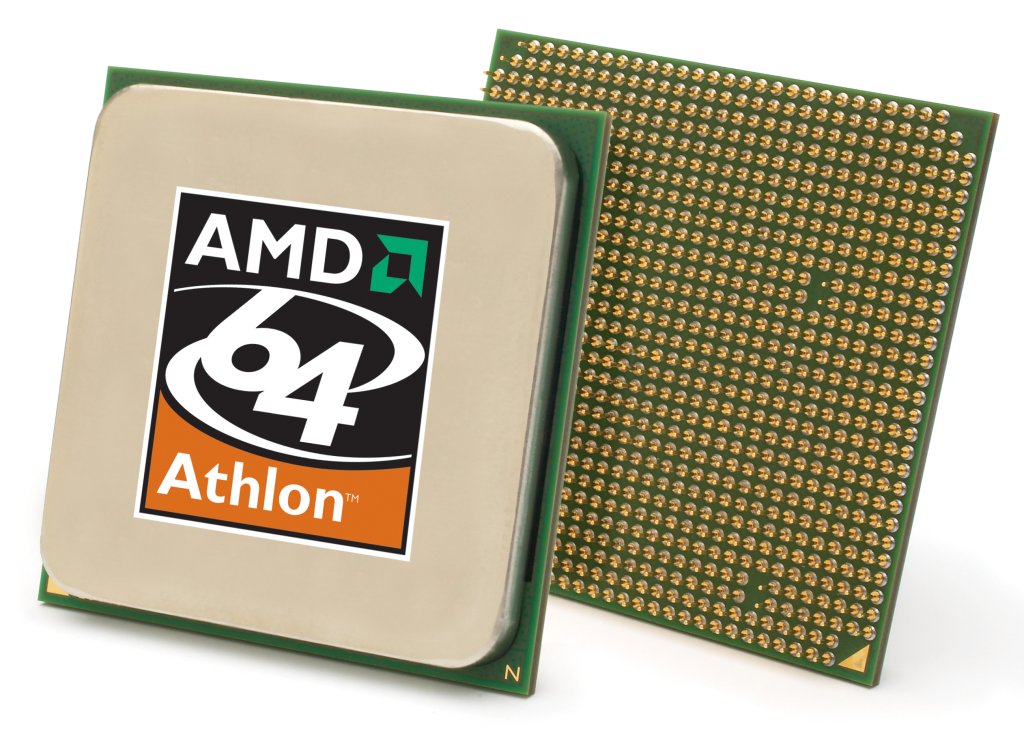
64- Itanium Itanium 2, 64- 32- , Athlon 64 64- x86. Intel 64- , EM64T IA-32e. Intel AMD, . AMD64, .
In the same year, Intel released the first processor, which implemented a third-level cache memory - Pentium 4 Extreme Edition. It was built 2 MB cache, significantly increased the number of transistors and as a result - performance. The Pentium M chip for laptop computers also appeared. It was conceived as an integral part of the new Centrino architecture, which should, firstly, reduce energy consumption, thereby increasing the battery life, and secondly, make it possible to produce more compact and lightweight cases., 64- , 64- . 2005 Microsoft Windows XP Professional x64 Edition, AMD64 EM64T.
, AMD 2004- x86- Athlon 64 X2.
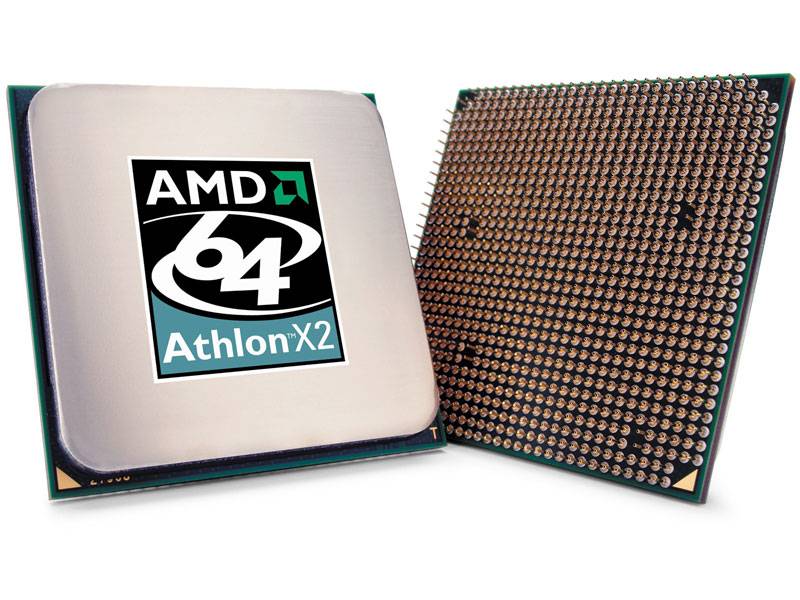
, .
2004 Intel Pentium 4 4 - .
On May 25, 2005, Intel Pentium D processors were demonstrated for the first time. There's nothing special to say about them, except that only about 130 W of heat dissipation.In 2006, AMD introduces the world's first 4-core server processor, where all 4 cores are grown on one chip, and not “glued together” from two, like those of my business colleagues. Solved the most complex engineering problems - and at the development stage, and in production.In the same year, Intel changed the name of the Pentium brand to Core and released the Core 2 Duo dual-core chip. Unlike the processor architecture of NetBurst (Pentium 4 and Pentium D), in Core 2 architecture, the emphasis was not on increasing the clock frequency, but on improving other processor parameters, such as cache, efficiency and number of cores. The dissipated power of these processors was significantly lower than that of the desktop Pentium. With a TDP of 65 W, the Core 2 processor had the smallest power dissipation of all then available desktop microprocessors, including Prescott (Intel) cores with a TDP of 130 W and San Diego cores (AMD) with a TDP core 89 W.The first desktop quad-core processor was the Intel Core 2 Extreme QX6700 with a clock speed of 2.67 GHz and 8 MB of second-level cache.In 2007, the Penryn 45-nanometer microarchitecture came out using lead-free Hi-k metal gates. The technology has been used in the Intel Core 2 Duo processor family. Support for SSE4 instructions has been added to the architecture, and the maximum size of the Level 2 cache in dual-core processors has increased from 4 MB to 6 MB.In 2008, the next-generation architecture came out - Nehalem. The processors have an integrated memory controller that supports 2 or 3 DDR3 SDRAM channels or 4 FB-DIMM channels. Replaced the FSB bus, a new QPI bus has arrived. The level 2 cache is reduced to 256 KB per core.Intel soon transferred the Nehalem architecture to a new 32nm process technology. This line of processors is called Westmere.
Unlike the processor architecture of NetBurst (Pentium 4 and Pentium D), in Core 2 architecture, the emphasis was not on increasing the clock frequency, but on improving other processor parameters, such as cache, efficiency and number of cores. The dissipated power of these processors was significantly lower than that of the desktop Pentium. With a TDP of 65 W, the Core 2 processor had the smallest power dissipation of all then available desktop microprocessors, including Prescott (Intel) cores with a TDP of 130 W and San Diego cores (AMD) with a TDP core 89 W.The first desktop quad-core processor was the Intel Core 2 Extreme QX6700 with a clock speed of 2.67 GHz and 8 MB of second-level cache.In 2007, the Penryn 45-nanometer microarchitecture came out using lead-free Hi-k metal gates. The technology has been used in the Intel Core 2 Duo processor family. Support for SSE4 instructions has been added to the architecture, and the maximum size of the Level 2 cache in dual-core processors has increased from 4 MB to 6 MB.In 2008, the next-generation architecture came out - Nehalem. The processors have an integrated memory controller that supports 2 or 3 DDR3 SDRAM channels or 4 FB-DIMM channels. Replaced the FSB bus, a new QPI bus has arrived. The level 2 cache is reduced to 256 KB per core.Intel soon transferred the Nehalem architecture to a new 32nm process technology. This line of processors is called Westmere.Clarkdale, , 45- .
AMD Intel. 2007 x86 – Phenom (K10).
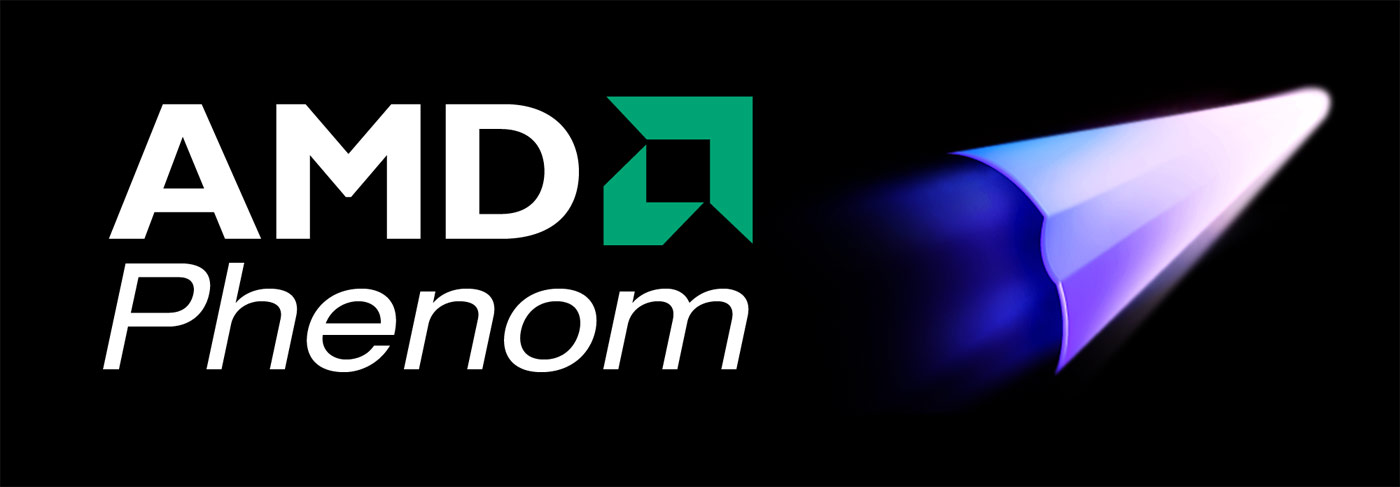
. 1- 2- K10 L3 2 . 1- 64 , - 2- — 512 . DDR3. K10 64- . 128- . , HyperTransport 3.0.
2009 Intel AMD, . , Intel , . Intel , AMD. , . Intel AMD 1,25 - 5 .
2011 Athlon- , — Intel Sandy Bridge, Core – , . AMD – Bulldozer — AMD FX, .
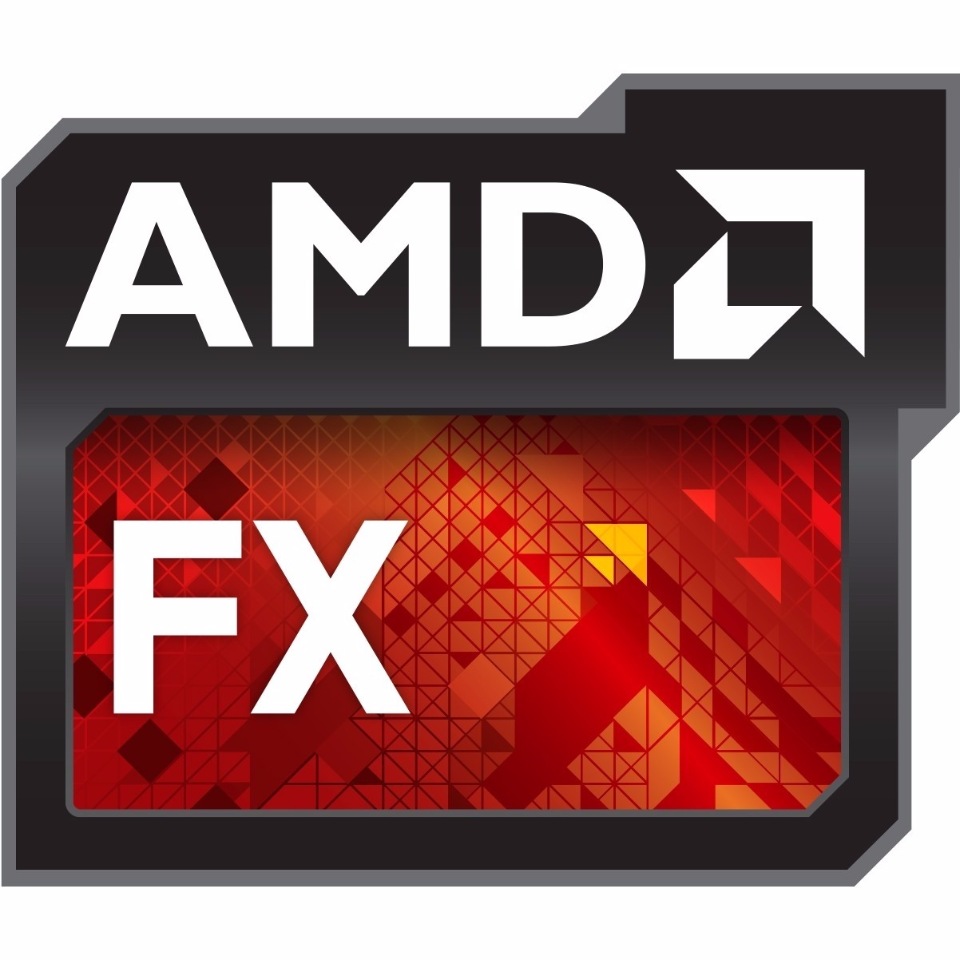
AMD – Intel ( ) . , , – «» , . FX ?
– 2011 AMD FX « », – ( ), . FX , . , AMD , Bulldozer , .
The productivity of AMD chips was very high, and in FX synthetics it was easy to show impressive results - unfortunately, it was impossible to say the same about game loads: a mode of 1-2 cores and the lack of support for the normal parallelization of cores led to the “Bulldozer” with a great creak coped with loads where Sandy Bridge did not even feel the difficulties. Add to this the whole two Achilles' heels of the series - the dependence on fast memory and the rudimentary north bridge, as well as the presence of only one FPU block for every two cores - and the result is quite deplorable. AMD FX was called a hot and slow alternative to fast and powerful blue processors, which took only relative cheapness and compatibility with old motherboards. At first glance, it was a complete failure,However, AMD has never disdained to work on the bugs - and this is exactly the kind of work that Vishera has become - a kind of reload of the Bulldozer architecture, which entered the market at the end of 2012.The updated Bulldozer was named Piledriver, and the architecture itself added instructions, increased muscles in single-threaded loads, and optimized the work of a large number of cores, which increased multi-threaded performance. However, in those days, the competitor for the renewed and refreshed red series was the notorious Ivy Bridge, which only increased the number of Intel fans. AMD decided to act on the already run-in strategy of attracting budget users, the overall savings on components and the ability to get more for less money (without encroaching on the segment above).( ) AMD , AMD FX , – , Newegg 2016 AMD FX-6300 ( i7 6700k), FX-8350 , i7 4790k. i5, «» , Piledriver.
Finally, it is worth noting a rather amusing fact, which several years ago was considered to be an excuse for AMD fans - this is about the confrontation between FX-8350 and i5 2500k, which originated during the Bulldozer release. For a long time, it was believed that the red processor was far behind the 2500k chosen by many enthusiasts, but in the fresh tests of 2017, paired up with the most powerful GPU, the FX-8350 turns out to be faster in almost all gaming tests. It would be appropriate to say "Hurray, wait!".And Intel, meanwhile, continues to conquer the market.
2011 , Sandy Bridge, , LGA 1155. Intel, , , . , i5 2500 — , 5 , , , 2017, , . hwbot.org 6014,1 SAV. 4 3 6 , 3,3 , , , . i7 2600 2700K — 4 , 8 . , , , , . , . , 2600 i5 2500 , . , , Intel, , .
In 2012, Intel launches the 3rd generation of processors, called Ivy Bridge, which looks weird, after all, just a year has passed, have they really been able to invent something fundamentally new, which would give a tangible performance boost? As if not so, the new generation of processors is based on the same socket - LGA 1155, and the processors of this generation are not much ahead of the previous ones, this is due, of course, to the fact that there was no competition in the top segment. All the same AMD, not to say, that would breathe tightly in the back of the first, because Intel could afford to produce processors a little more powerful than their own, because they actually became monopolists in the market. But then another trick has crept in, now in the form of a thermal interface under the lid, Intel did not use solder, but some of its own, as the people called it - chewing gum, this was done to save money, which brought even more income.This topic just blew up the network, it was no longer possible to overclock the processors to the eyeball, because they received an average temperature of 10 degrees more than the previous ones, because the frequencies came closer to the border of 4 - 4.2 GHz. Special extremals even opened the processor lid, in order to replace the thermal paste with a more effective one, not everyone managed to do this without chipping the crystal or damaging the processor's contacts, but the method turned out to be effective. However, I can highlight some processors that were a success.It was not possible for everyone to do this without chip chips or damage to the processor's contacts, but the method turned out to be effective. However, I can highlight some processors that were a success.It was not possible for everyone to do this without chip chips or damage to the processor's contacts, but the method turned out to be effective. However, I can highlight some processors that were a success.You may have noticed that I did not mention the i3, when talking about the second generation, this is due to the fact that processors of this power were not particularly popular. Everyone always wanted i5, who had money, of course, took i7.In the 3rd generation, which we will talk about now, the situation has not changed dramatically.Successful among this generation, i5 3340 and i5 3570K can be distinguished, they did not differ in performance, everything rested on the frequency, the cache was still the same - 6 MB, 3340 did not have overclocking capability, because 3570K was more desirable, but one the second provided good gaming performance. From i7 to 1155 it was the only 3770 with the K index with an 8 MB cache and a frequency of 3.5-3.9 GHz. In boost, it was usually overclocked to 4.2 - 4.5 GHz. Interestingly, in the same 2011, a new LGA 2011 socket was released, for which two i7 4820K super processors (4 cores, 8 threads, with L3 cache - 10 MB) and i7 4930K (6 cores, 12 threads, L3 cache was released) equal to as much as 12 MB), what kind of monsters they were is hard to say, such a percentage cost 1000 bucks and was a dream of many schoolchildren at that time, although for games, of course, it was too powerful, more suitable for professional tasks.2013 Haswell, -, , , , AMD . . i5 . , , «», , , «» Intel, «». , - . ( 15, , ), — Intel, «» .
i5- . 3 3,9 , «», , . i7 , 4770 — 4 8 , 3,5 — 3,9 , , , , , , , 5 , . «». , Xeon E3-1231V3, , , i7 4770, . , 1150 . i7 4790K , , . , , 4770. 4,7 , .
There are also “Monsters” of this generation (Haswell-E): i7-5960X Extreme Edition, i7-5930K and 5820K, server solutions adapted for the desktop market. These were the most stuffed-up processors at the time. They are based on a new 2011 v3 socket and cost a lot of money, but their performance is exceptional, which is not surprising, because the older processor has 16 whole streams and 20 MB of cache in the line. Pick up the jaw and go on.2015 Skylake, 1151 , : -, , , -, DDR4 DirectX 12, Open GL 4.4, Open CL 2.0, , . , K , , . – .
There were few processors here, Intel again improved the business model, why release 6 processors, if 3-4 of the entire line are popular? So we will release 4 middle and 2 expensive segment processors. Personally, according to my observations, most often they take i5 6500 or 6600K, all the same 4 cores with 6 MB cache and turbo bus.In 2016, Intel introduced the fifth generation of processors - Broadwell-E. The Core i7-6950X was the world's first desktop decy-core processor in the world. The price of such a processor at the time of the start of sales was 1723 dollars. Many found it very strange such a move by Intel.On March 2, 2017, the new AMD Ryzen 7 high-end processors came on sale, including 3 models: 1800X, 1700X and 1700. As you already know, on February 22 of this year, the official presentation of Ryzen was held, on which Lisa Su said that engineers exceeded the forecast of 40%. In fact, Ryzen is ahead of Excavator by 52%, and given that more than half a year has passed since the start of sales of Ryzen, the release of new BIOS updates that increase performance and fixed minor bugs in Zen architecture, we can say that this figure has increased to 60% . Today, the older Ryzen is the fastest eight-core processor in the world. And here one more assumption was confirmed. About the ten-core Intel. In fact, this was the real and only answer for Ryzen. Intel stole the victory in advance from AMD, supposedly, whatever you released there,the fastest processor will stay with us anyway. And then at the presentation, Lisa Soo could not call Ryzen the absolute champion, but only the best of the eight cores. Such is the subtle trolling from Intel.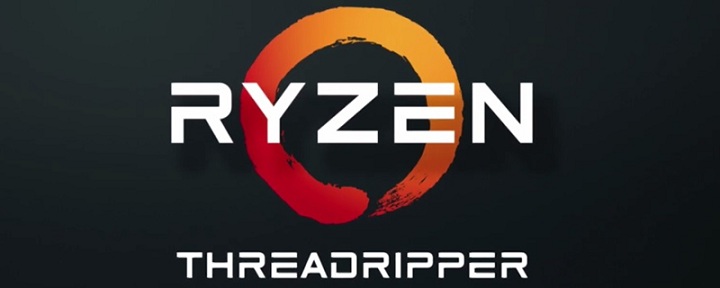
 Now AMD and Intel are introducing new flagship processors. In AMD, it is Ryzen Threadripper, in Intel - Core i9. The price of eighteen nuclear thirty-six streamline flagship Intel Core i9-7980XE is about two thousand dollars. The price of sixteen thirty-two core Intel Core i9-7960X processors is $ 1,700, while a similar sixteen thirty-two core AMD Ryzen Threadripper 1950X costs about a thousand dollars. Make reasonable conclusions yourself, gentlemen.Video on this material: www.youtube.com/watch?v=PJmPBWQE8Uk&t Written by:RiddleRiderAlexander LisBlabber_mouth
Now AMD and Intel are introducing new flagship processors. In AMD, it is Ryzen Threadripper, in Intel - Core i9. The price of eighteen nuclear thirty-six streamline flagship Intel Core i9-7980XE is about two thousand dollars. The price of sixteen thirty-two core Intel Core i9-7960X processors is $ 1,700, while a similar sixteen thirty-two core AMD Ryzen Threadripper 1950X costs about a thousand dollars. Make reasonable conclusions yourself, gentlemen.Video on this material: www.youtube.com/watch?v=PJmPBWQE8Uk&t Written by:RiddleRiderAlexander LisBlabber_mouth